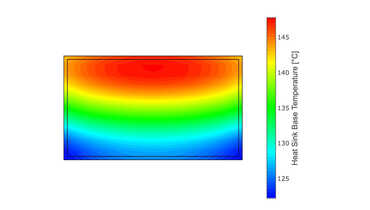Imagine a world where your embedded Human-Machine Interface (HMI) systems not only react to user input but also anticipate needs, optimize processes in real-time, and seamlessly integrate with cloud solutions. This isn't a far-off vision; it's the reality Interelectronix can help you achieve. With our deep industry expertise and understanding of embedded systems, we know the challenges you face and the transformative potential of edge integration combined with cloud solutions. Our goal is to empower your systems to be more efficient, responsive, and intelligent. Let's dive into why this integration is not just beneficial but essential for modern embedded HMIs.
The Evolution of Embedded HMIs
Embedded Human-Machine Interfaces have come a long way from their humble beginnings. Originally, these interfaces were simple, isolated systems designed to perform specific tasks. They provided a basic means for humans to interact with machines, often limited by the hardware capabilities of their time. However, as technology has advanced, so too have the expectations placed on these systems. Today's embedded HMIs need to be more than just functional; they must be intelligent, interconnected, and capable of processing vast amounts of data in real-time.
The integration of cloud solutions and edge computing represents a significant leap forward in this evolution. By leveraging the power of the cloud, embedded HMIs can access virtually unlimited computing resources and storage. This allows for the processing and analysis of large datasets, which can be used to enhance the functionality and responsiveness of the system. Moreover, edge computing brings computation and data storage closer to the source of data generation, reducing latency and improving the overall performance of the HMI.
The Benefits of Cloud Solutions for Embedded HMIs
Scalability and Flexibility
One of the primary advantages of integrating cloud solutions with embedded HMIs is the scalability and flexibility it provides. Cloud platforms can easily scale to accommodate the growing data and processing needs of your systems. This means you can start with a small deployment and gradually expand as your requirements increase, without the need for significant upfront investment in hardware.
Furthermore, cloud solutions offer unparalleled flexibility. They enable you to deploy updates and new features remotely, ensuring that your embedded HMI systems are always up-to-date with the latest advancements. This continuous improvement capability is crucial in today's fast-paced technological landscape, where staying ahead of the competition often requires rapid innovation and adaptation.
Enhanced Data Processing and Analytics
Embedded HMIs generate a wealth of data, from user interactions to sensor readings and system logs. Cloud solutions provide the infrastructure necessary to process and analyze this data effectively. Advanced analytics and machine learning algorithms can be applied to uncover insights, optimize system performance, and predict potential issues before they become critical problems.
For example, by analyzing user interaction data, you can identify patterns and trends that inform the design of more intuitive and user-friendly interfaces. Predictive maintenance algorithms can detect anomalies in system performance, allowing for proactive maintenance that minimizes downtime and extends the lifespan of your equipment. The ability to harness and act on this data is a game-changer for the efficiency and reliability of your embedded HMI systems.
Seamless Integration and Interconnectivity
Modern embedded HMIs often need to operate within a larger ecosystem of devices and systems. Cloud solutions facilitate seamless integration and interconnectivity, enabling your HMIs to communicate and collaborate with other components of your infrastructure. This interoperability is essential for creating cohesive and efficient workflows, particularly in industrial and manufacturing environments where different machines and systems must work together harmoniously.
Through cloud-based APIs and services, you can achieve a higher level of integration that enhances the overall functionality of your HMI systems. For instance, data from various sensors and devices can be aggregated and analyzed in the cloud, providing a holistic view of your operations. This comprehensive perspective allows for more informed decision-making and better coordination across different parts of your organization.
The Role of Edge Computing in Embedded HMIs
While cloud solutions offer numerous benefits, they are not without their limitations. One of the primary challenges is latency—the delay between data generation and processing. In applications where real-time responsiveness is critical, such as in industrial automation or medical devices, even small delays can be unacceptable. This is where edge computing comes into play.
Reducing Latency and Improving Real-Time Performance
Edge computing involves processing data closer to the source, at the "edge" of the network. By handling computation and storage locally, edge computing minimizes latency and ensures that your embedded HMI systems can respond to user inputs and environmental changes in real-time. This is particularly important in scenarios where immediate feedback and action are required to maintain safety and efficiency.
For example, in an industrial setting, an embedded HMI might need to control machinery based on sensor data. Any delay in processing this data could result in suboptimal performance or even dangerous situations. By integrating edge computing, you can ensure that critical computations are performed instantaneously, enhancing both the safety and effectiveness of your operations.
Enhancing Reliability and Resilience
Another advantage of edge computing is its ability to enhance the reliability and resilience of your embedded HMI systems. By decentralizing data processing and reducing dependency on a centralized cloud infrastructure, edge computing can help mitigate the impact of network outages or disruptions. This localized approach ensures that your systems continue to operate smoothly even when connectivity to the cloud is compromised.
In environments where continuous operation is essential, such as in healthcare or transportation, this resilience is invaluable. It ensures that your embedded HMIs remain functional and responsive, maintaining the continuity of critical processes and services.
Optimizing Bandwidth Usage
Data transmission to and from the cloud can consume significant bandwidth, especially in applications that generate large volumes of data. Edge computing helps optimize bandwidth usage by processing and filtering data locally, transmitting only the most relevant information to the cloud. This reduces the strain on network resources and can result in cost savings, particularly in scenarios where data transmission costs are high.
By implementing edge computing, you can achieve a more efficient balance between local and cloud-based processing, ensuring that your embedded HMI systems make the best use of available resources.
The Synergy of Cloud and Edge Computing
The true power of modern embedded HMI systems lies in the synergy between cloud solutions and edge computing. By leveraging the strengths of both approaches, you can create a highly efficient, responsive, and intelligent system that meets the demands of today's complex applications.
Balancing Local and Cloud-Based Processing
Achieving the optimal balance between local and cloud-based processing requires a thoughtful approach. Critical, time-sensitive tasks should be handled at the edge, while less urgent, data-intensive processes can be offloaded to the cloud. This hybrid model allows you to benefit from the low latency and reliability of edge computing while leveraging the expansive capabilities of cloud solutions for more complex data analysis and storage.
Enabling Advanced Features and Capabilities
The combination of cloud and edge computing opens the door to advanced features and capabilities that were previously unattainable. For example, real-time data processing at the edge can be complemented by cloud-based machine learning models that continuously learn and improve based on aggregated data from multiple sources. This enables predictive analytics, automated decision-making, and adaptive user interfaces that enhance the overall functionality and user experience of your embedded HMI systems.
Facilitating Continuous Improvement and Innovation
By integrating cloud solutions and edge computing, you create a dynamic environment that supports continuous improvement and innovation. The cloud provides the infrastructure for deploying updates and new features rapidly, while edge computing ensures that these enhancements are implemented efficiently and effectively. This iterative approach allows you to stay ahead of industry trends and technological advancements, delivering cutting-edge solutions that meet the evolving needs of your users.
Challenges and Considerations
While the integration of cloud solutions and edge computing offers numerous benefits, it also presents certain challenges and considerations that must be addressed to ensure successful implementation.
Security and Privacy
Security and privacy are paramount concerns when dealing with embedded HMI systems, particularly in industries such as healthcare and finance where sensitive data is involved. Ensuring that data is protected both in transit and at rest requires robust encryption, secure authentication mechanisms, and comprehensive access control policies. Additionally, compliance with industry regulations and standards is essential to maintain trust and avoid legal repercussions.
System Complexity and Management
The integration of cloud and edge computing can introduce additional complexity to your embedded HMI systems. Managing this complexity requires careful planning and the use of sophisticated management tools that provide visibility and control over both local and cloud-based components. Effective monitoring, troubleshooting, and maintenance processes are essential to ensure the smooth operation of your systems.
Cost Considerations
While cloud solutions offer scalability and flexibility, they can also incur ongoing costs associated with data storage, processing, and transmission. Similarly, implementing edge computing requires investment in local hardware and infrastructure. Balancing these costs against the benefits provided by cloud and edge integration is crucial to achieving a cost-effective solution that meets your performance and functionality requirements.
Conclusion
The integration of cloud solutions and edge computing is transforming the landscape of embedded Human-Machine Interfaces, enabling systems that are more intelligent, responsive, and efficient than ever before. At Interelectronix, we understand the unique challenges and opportunities presented by this integration, and we are committed to helping you navigate this complex landscape. Our expertise in embedded systems and cutting-edge technologies ensures that we can provide the guidance and support you need to achieve your goals.
Don't let your embedded HMI systems fall behind the curve. Embrace the future of intelligent, interconnected systems with Interelectronix. Contact us today to learn more about how we can help you harness the power of cloud and edge integration to create the next generation of embedded HMI solutions.



